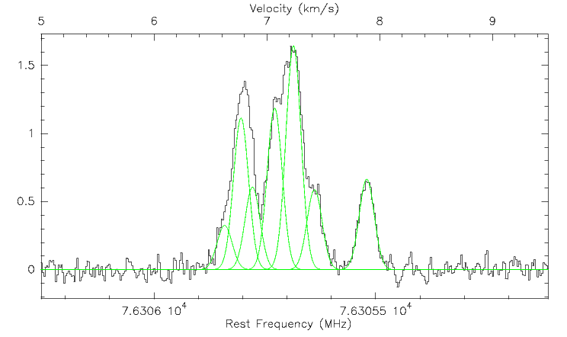News
Cold interstellar clouds beat the best labs on Earth
Astronomers use an exceptionally cold gas cloud in space to measure the structure of molecules to a precision that cannot be attained in the laboratory.
Knowledge of the hyperfine structure of molecular lines is useful for estimating reliable column densities from observed emission, and essential for the derivation of kinematic information from line profiles.
Deuterium bearing molecules are especially useful in this regard, because they are good probes of the physical and chemical structure of molecular cloud cores on the verge of star formation.
However, the necessary spectroscopic data are often missing, especially for molecules which are too unstable for laboratory study.
Astronomers have observed the rotational ground-state (J = 1-0) transitions of the DCO+, HN13C and DNC molecules with the IRAM 30m telescope toward the cold dark cloud LDN 1512 which has exceptionally narrow lines.
The spectra have a relative frequency resolution of 4 x 10-8 and are used to derive nuclear quadrupole and spin-rotation parameters for these species.
The measurements are supplemented by high-level quantum-chemical calculations using coupled-cluster techniques and large atomic-orbital basis sets.
The results are consistent with, but much more accurate than previous determinations, and are in good agreement with current best theoretical estimates.
The measured splittings range over ~1 km/s which is similar to the speed of gas motions around forming stars; the new data will thus be crucial for a better understanding of the star formation process.
The results are also significant from a molecular physics point of view, as the large isotopic shifts for the hyperfine parameters indicate significant non-rigidity of these molecules, particularly along the bending coordinate.
The results will be published in the journal Astronomy & Astrophysics later this year.
A preprint is available on-line at http://de.arxiv.org/abs/0909.0390.
The authors of the study are Floris van der Tak (SRON, Groningen, The Netherlands), Holger Müller (University of Cologne, Germany), Michael Harding (University of Texas at Austin, USA) and Jürgen Gauss (University of Mainz, Germany).




